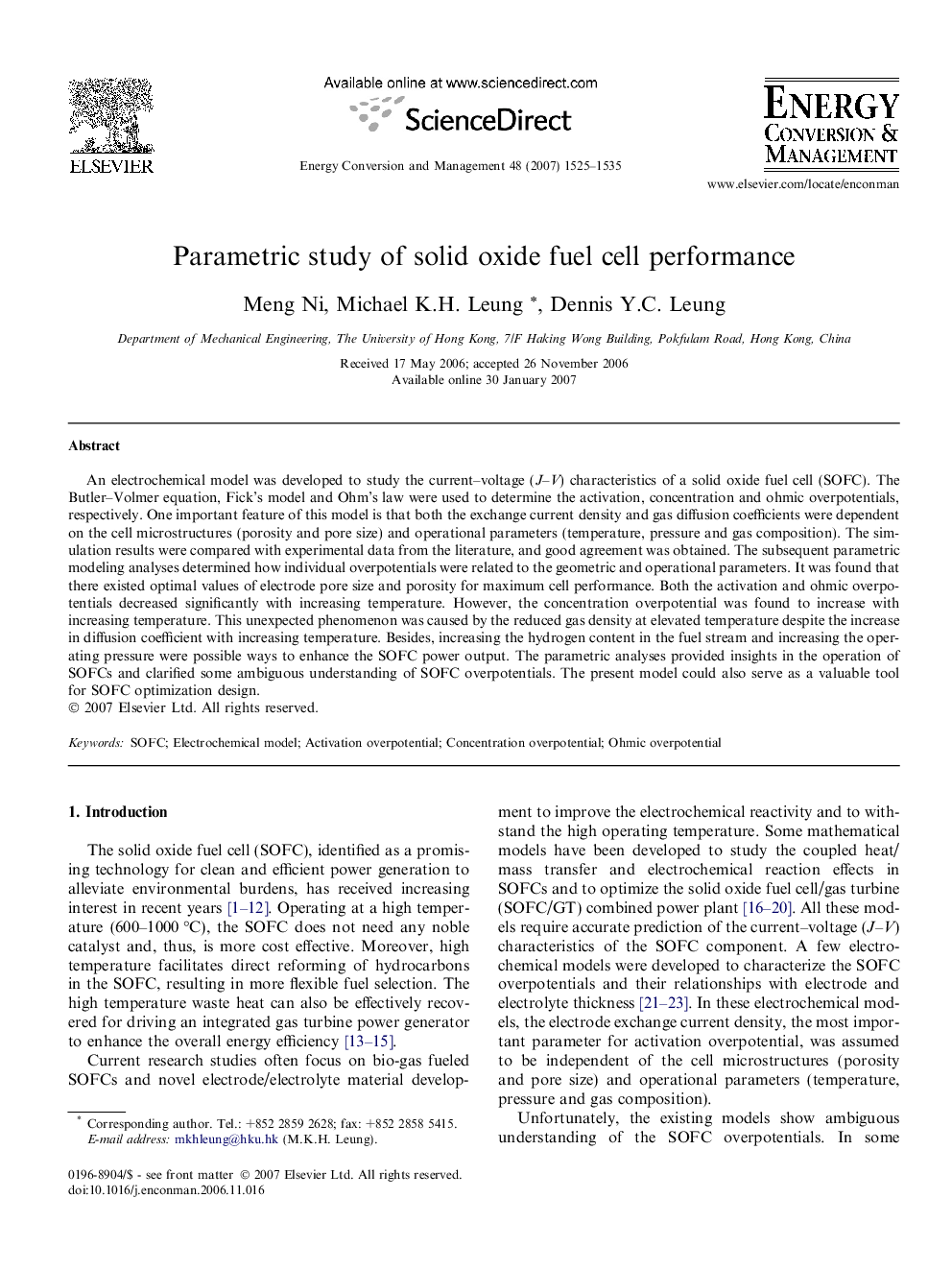| Article ID | Journal | Published Year | Pages | File Type |
|---|---|---|---|---|
| 765414 | Energy Conversion and Management | 2007 | 11 Pages |
An electrochemical model was developed to study the current–voltage (J–V) characteristics of a solid oxide fuel cell (SOFC). The Butler–Volmer equation, Fick’s model and Ohm’s law were used to determine the activation, concentration and ohmic overpotentials, respectively. One important feature of this model is that both the exchange current density and gas diffusion coefficients were dependent on the cell microstructures (porosity and pore size) and operational parameters (temperature, pressure and gas composition). The simulation results were compared with experimental data from the literature, and good agreement was obtained. The subsequent parametric modeling analyses determined how individual overpotentials were related to the geometric and operational parameters. It was found that there existed optimal values of electrode pore size and porosity for maximum cell performance. Both the activation and ohmic overpotentials decreased significantly with increasing temperature. However, the concentration overpotential was found to increase with increasing temperature. This unexpected phenomenon was caused by the reduced gas density at elevated temperature despite the increase in diffusion coefficient with increasing temperature. Besides, increasing the hydrogen content in the fuel stream and increasing the operating pressure were possible ways to enhance the SOFC power output. The parametric analyses provided insights in the operation of SOFCs and clarified some ambiguous understanding of SOFC overpotentials. The present model could also serve as a valuable tool for SOFC optimization design.
